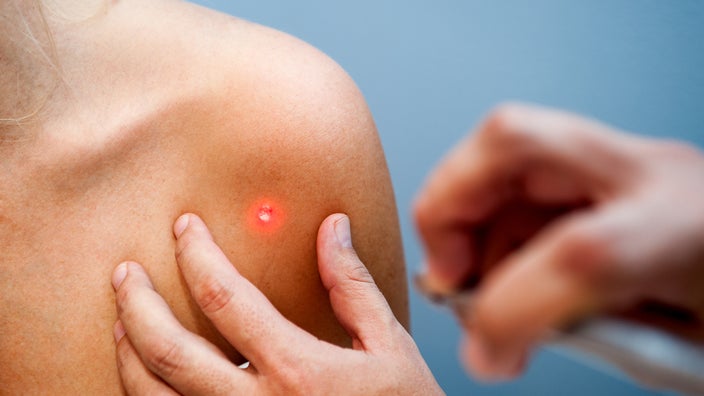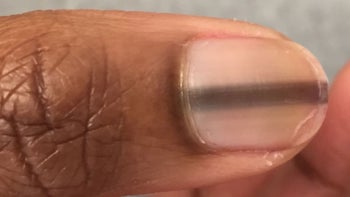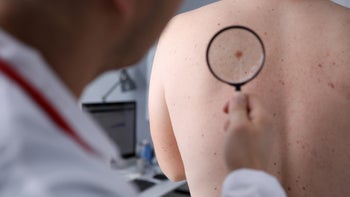
How Much Does Skin Cancer Treatment Cost?
Key takeaways:
Types of skin cancer treatment include surgery, chemotherapy, and radiation.
Skin cancer treatment costs depend on the cancer’s type, location, and stage.
Insurance covers some of the expenses, but out-of-pocket costs can be high.

Skin cancer is the most common cancer in the U.S., and anyone can develop it. Although it isn’t clear how much the disease affects various racial groups, people with fair skin and certain types of moles are at greater risk of developing it.
There are several kinds of skin cancer. The three most prevalent are:
Basal cell carcinoma: This is the most common skin cancer. It usually appears on the head or neck as small, fleshy bumps or nodules but can also occur in other areas. This slow-growing cancer rarely spreads, yet it can cause bone damage in the affected area.
Squamous cell carcinoma: This type of skin cancer appears as nodules or red, scaly patches. These tumors can develop into large masses and may spread to other parts of the body.
Melanoma: The most serious form of skin cancer, melanoma makes up only 3% of skin cancer diagnoses but is responsible for more than 75% of skin cancer deaths. Risk factors include UV exposure and severe sunburns (particularly during childhood), genetic factors, and immune-system deficiencies.
Other forms include:
Cutaneous T-cell lymphoma
Dermatofibrosarcoma protuberans (DFSP)
Merkel cell carcinoma
Sebaceous carcinoma
How do you treat skin cancer?
Treatments vary based on the type, location, and stage of the cancer.
Skin cancer is typically treated in three ways:
Surgery is the primary treatment for skin cancer.
Chemotherapy and chemical peels use drugs to kill cancer cells, stop them from dividing, or remove them from the skin. You can take these drugs in various formulations:
Orally
By injection
By infusion
By application to the skin
Radiation therapy uses high doses of radiation to kill cancer cells and shrink tumors.
Your doctor may recommend a combination of these therapies, or other options such as photodynamic treatment or immunotherapy.
Do you need surgery for skin cancer?
Though not always necessary, surgery is the most frequent treatment for skin cancer. The procedure is usually minor and can even be done in the doctor’s office.
If your cancer has spread, your doctor may recommend more extensive surgery and extra treatments such as radiation or chemotherapy.
Do you need radiation or chemotherapy for skin cancer?
It’s possible that you will. To determine the most appropriate treatment, your doctor considers a number of factors, including:
Your health status and medical history
Your family medical history
The cancer’s type, location, and stage
Can you leave certain types of skin cancer alone?
Ignoring skin cancer is a bad idea. Have your skin examined promptly. Some cancers can spread rapidly — in as little as 6 weeks, by some estimates. For example, melanoma is a fast-growing skin cancer. A study reported in the Journal of the American Academy of Dermatology found that people with melanoma who got treatment within 30 days of biopsy were less likely to die from the disease than those treated later.
How much does skin cancer treatment cost in the U.S.?
The CDC estimates that treatment for all kinds of skin cancer costs at least $8 billion per year.
The agency projects that the annual cost of treating new patients with melanoma will be $1.6 billion by 2030.
For individuals, the cost of treating your skin cancer depends on the details of your case, because those determine your treatment regimen. There are many treatments for skin cancer, including chemotherapy, surgery, and radiation — and their costs can vary widely. Many cancer drugs — especially immunotherapy drugs — are very expensive. Even with insurance coverage, your out-of-pocket coinsurance costs could be thousands of dollars.
How does the stage of cancer affect treatment options and cost?
Cancer stages indicate the severity of the disease. At each stage, there are different types of treatment, each with its own set of costs.
| Stage | Meaning |
|---|---|
| Abnormal cells are present but have not spread to nearby tissue. These cells are not cancer but may become cancer. | |
| Cancer is present. The higher the number, the larger the tumor and the more it has spread into nearby tissues, including lymph nodes. | |
| The cancer has spread to distant parts of the body |
Is treatment more expensive for advanced cancers?
Generally, yes. Recent data on Medicare beneficiaries age 65 and older shows that people with localized cancers (that is, tumors still limited to one part of the body) face lower costs. In 2008, a study in the Journal of the National Cancer Institute examined elderly cancer patients’ average net costs. It found that, in the 12 months after initial diagnosis, people with widespread melanoma spent more than 6 times as much on care as those with localized melanoma.
Skin cancer in people of color is often diagnosed at a later (and costlier) stage. Delays in both diagnosis and treatment give cancer time to progress further. A 2020 study in the Journal of the American Academy of Dermatology measured lag times between melanoma diagnosis and definitive surgery. Compared to non-Hispanic white people, Black people were 5 times more likely to wait at least 3 months for their surgery.
How much do skin cancer drugs cost?
Skin cancer is often treated with one or more chemotherapy drugs. Many are new medications that carry a high price tag. The NCI estimates new cancer drugs can cost more than $100,000 per patient per year.
Common drug classes used to treat skin cancer are:
| Drug class | Example | Cancer type | Average retail price |
|---|---|---|---|
| Kinase inhibitors | Mekinist | Melanoma | $18,053.01 |
| Hedgehog pathway inhibitors | Odomzo | Basal cell carcinoma | $14,818.79 |
| Nucleoside metabolic inhibitors | Fluorouracil | Basal cell carcinoma | $216.83 |
| Antifolates | Methotrexate injections | Squamous cell carcinoma | $177.83 |
| Antimetabolites | Hydrea | Squamous cell carcinoma | $53.15 |
These drug therapies are in limited distribution or administered directly by your doctor:
EGFR inhibitors, like Erbitux
How much does skin cancer surgery cost?
The most common surgical procedures for basal cell and squamous cell cancers are:
Simple excision: Cutting out the tumor and some of the normal tissue around it.
Shave excision: Shaving the surface of the skin to remove the tumor.
Mohs micrographic surgery (MMS): Removing the skin in layers until no more cancer cells are seen.
Surgeries for melanoma include simple excision and sentinel node biopsy. A 2021 report in the Annals of Surgical Oncology calculated how much a Medicare patient would pay for these treatments. For an excision plus a sentinel node biopsy, researchers estimated, the patient’s out-of-pocket cost would be $652. For the excision alone, it would be $79.
A 2021 study in the Journal of the American Academy of Dermatology examined one Boston hospital’s treatment of squamous cell carcinoma. With MMS the treatment cost averaged roughly $4,366; the average cost for excision was just under $4,700.
How much does radiation for skin cancer cost?
The price of radiation therapy depends on the type of therapy you get, the number of treatments you need, and the cost of healthcare where you live. Hospital-based radiation therapy for a non-melanoma skin lesion can cost between $2,000 and $8,000.
How expensive is follow-up care for skin cancer?
Follow-up care is an important part of managing skin cancer and lowering the risk of recurrence or spread. You may need a few doctor visits for screenings and monitoring after your treatment.
You may need wound care for the surgical site, as well. Wound-care costs depend on the size of the wound, the type of care, and the length of time your wound takes to heal. A recent study cited in the American Journal of Managed Care put the cost of 30-day wound-related care at $8,583 or more.
The bottom line
Several factors affect the costs of skin cancer treatment. The most important one is the stage of the disease at diagnosis. Doctors can often remove small tumors with outpatient surgery. If you need chemotherapy or immunotherapy, you’ll find that those drugs can be extremely expensive. Talk to your doctor and pharmacist about possible ways to reduce that expense.
Why trust our experts?


References
BetterHealthChannel. (2021). Melanoma.
Centers for Disease Control and Prevention. (2021). Basic information about skin cancer.
Centers for Disease Control and Prevention. (2021). Cost-effectiveness of skin cancer interventions.
Centers for Disease Control and Prevention. (2021). What are the risk factors for skin cancer?
Centers for Disease Control and Prevention. (2021). What is skin cancer?
Conic, R. Z., et al. (2017). Determination of the impact of melanoma surgical timing on survival using the National Cancer Database. Journal of the American Academy of Dermatology.
Herb, J. N., et al. (2021). Use and costs of sentinel lymph node biopsy in non-ulcerated T1b melanoma: Analysis of a population-based registry. Annals of Surgical Oncology.
Joszt, L. (2021). Comparing costs of wound therapy in the post-acute setting. The American Journal of Managed Care.
Lee, C. T., et. al. (2019). Surgical excision, Mohs micrographic surgery, external-beam radiotherapy, or brachytherapy for indolent skin cancer: An international meta-analysis of 58 studies with 21,000 patients. Cancer.
National Cancer Institute. (n.d.). Chemotherapy.
National Cancer Institute. (n.d.). Mohs surgery.
National Cancer Institute. (2015). Cancer staging.
National Cancer Institute. (2019). Radiation therapy to treat cancer.
National Cancer Institute. (2021). Annual report to the nation part 2: Patient economic burden of cancer care more than $21 billion in the United States in 2019.
National Cancer Institute. (2021). Melanoma treatment (PDQ®)–Patient version.
National Cancer Institute. (2021). Skin cancer treatment (PDQ®)–Patient version.
Rimer, B. K. (2018). The imperative of addressing cancer drug costs and value. National Cancer Institute.
Tripathi, R., et al. (2020). Racial differences in time to treatment for melanoma. Journal of the American Academy of Dermatology.
Udkoff, J., et al. (2021). Cost effectiveness of intermediate-risk squamous cell carcinoma treated with Mohs micrographic surgery compared with wide local excision. Journal of the American Academy of Dermatology.
United States Environmental Protection Agency. (n.d.). Health effects of UV radiation.
Yabroff, K. R., et al. (2008). Cost of care for elderly cancer patients in the United States. JNCI: Journal of the National Cancer Institute.
























